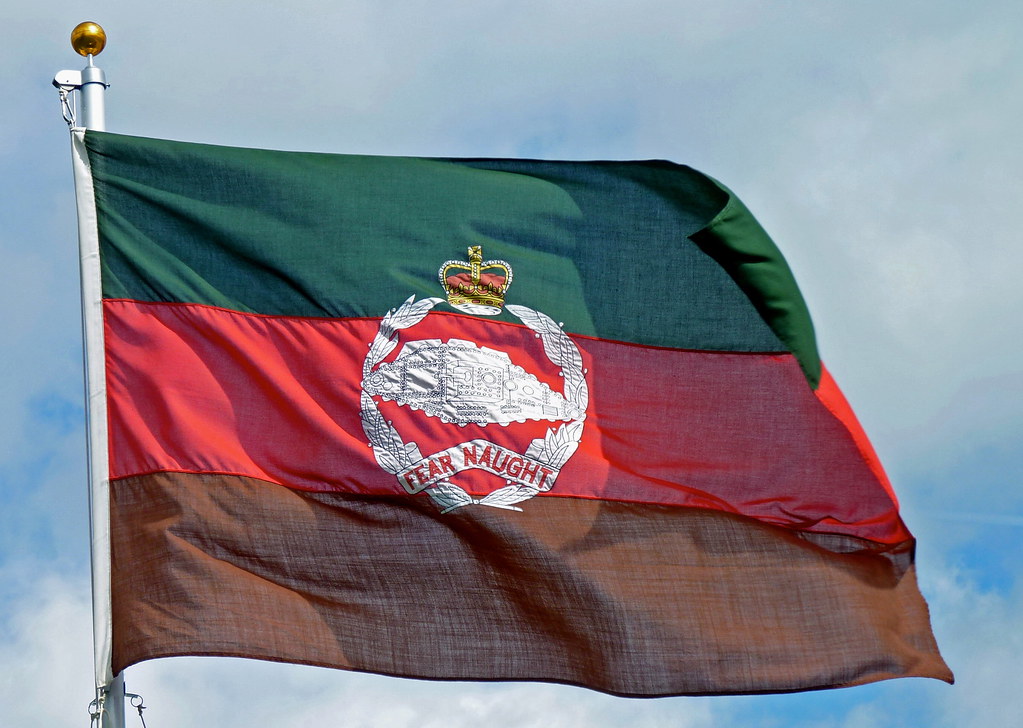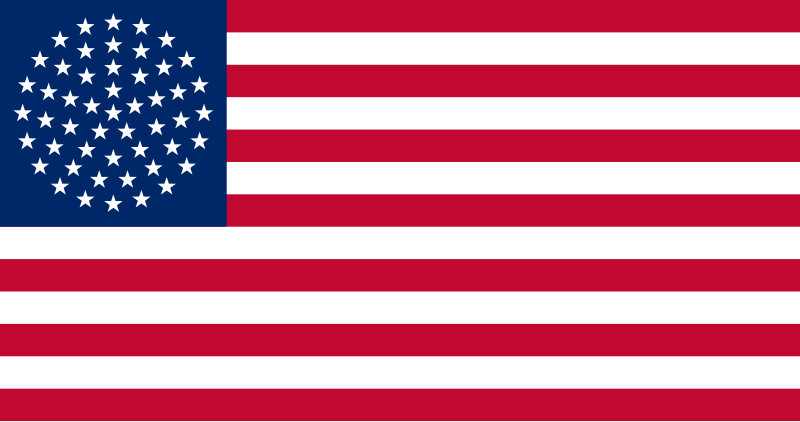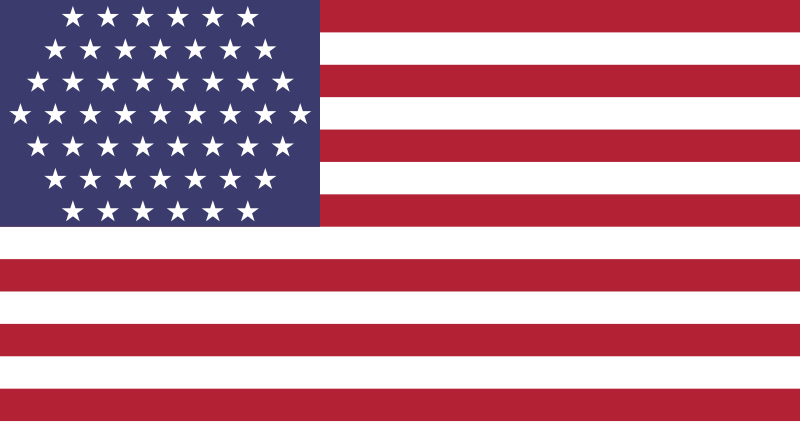The Royal Tank Regiment is the oldest tank unit in the world, Originally known as the Tank Corps and then Royal Tank Corps before being given the title of regiment, was founded in the First World War to operate the new invention of tanks. The Camp flag of the regiment (not the ceremonial standard or colour) is a horizontal tricolour of green, red and brown and features the regiment's cap badge featuring an original tank.
This is one of my favourite military flags for a number of reasons. Its a simple pattern which minus the cap badge is confined to three colours, but mainly because of its history. It is the only camp flag of the British Army that I am aware of to be born in battle.
Although not the first battle the tank was used in, the battle of Cambrai was the first where the tank played a decisive role being deployed in large numbers and achieving a breakthrough. The flag came from the Corps Commander Brigadier General Elles. When formed the Tank Corps had no unique colours or insignia, Brigadier Elles who lead from the front wanted something to distinguish his tank as the command vehicle, and decided to use a flag. After purchasing some coloured silk in town a homemade flag was stitched together and flown from the General's tank in the battle.
 |
| To the Green Fields Beyond, Cambrai, France, 20th November 1917 by David Pentland. Print can be purchased here |



















